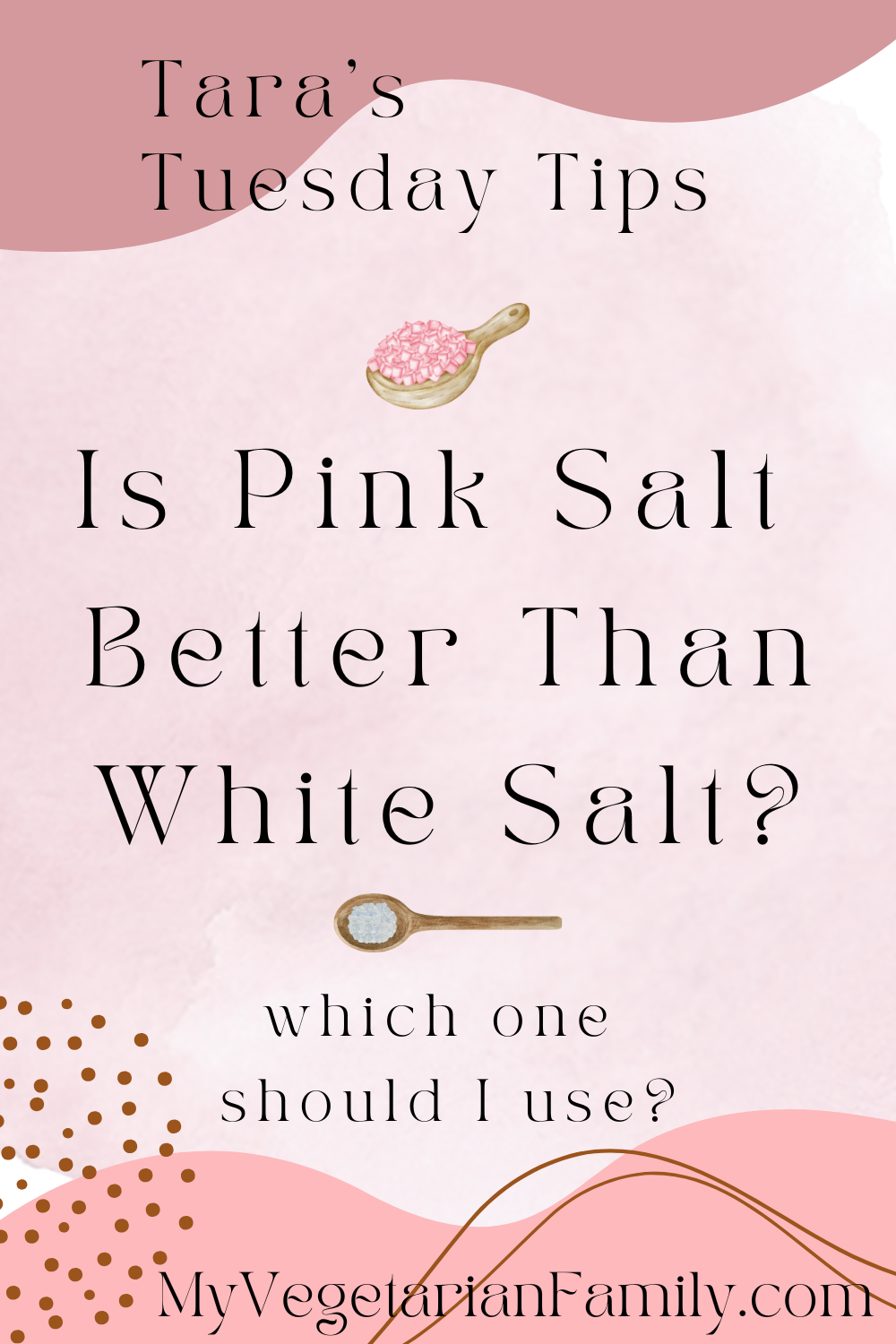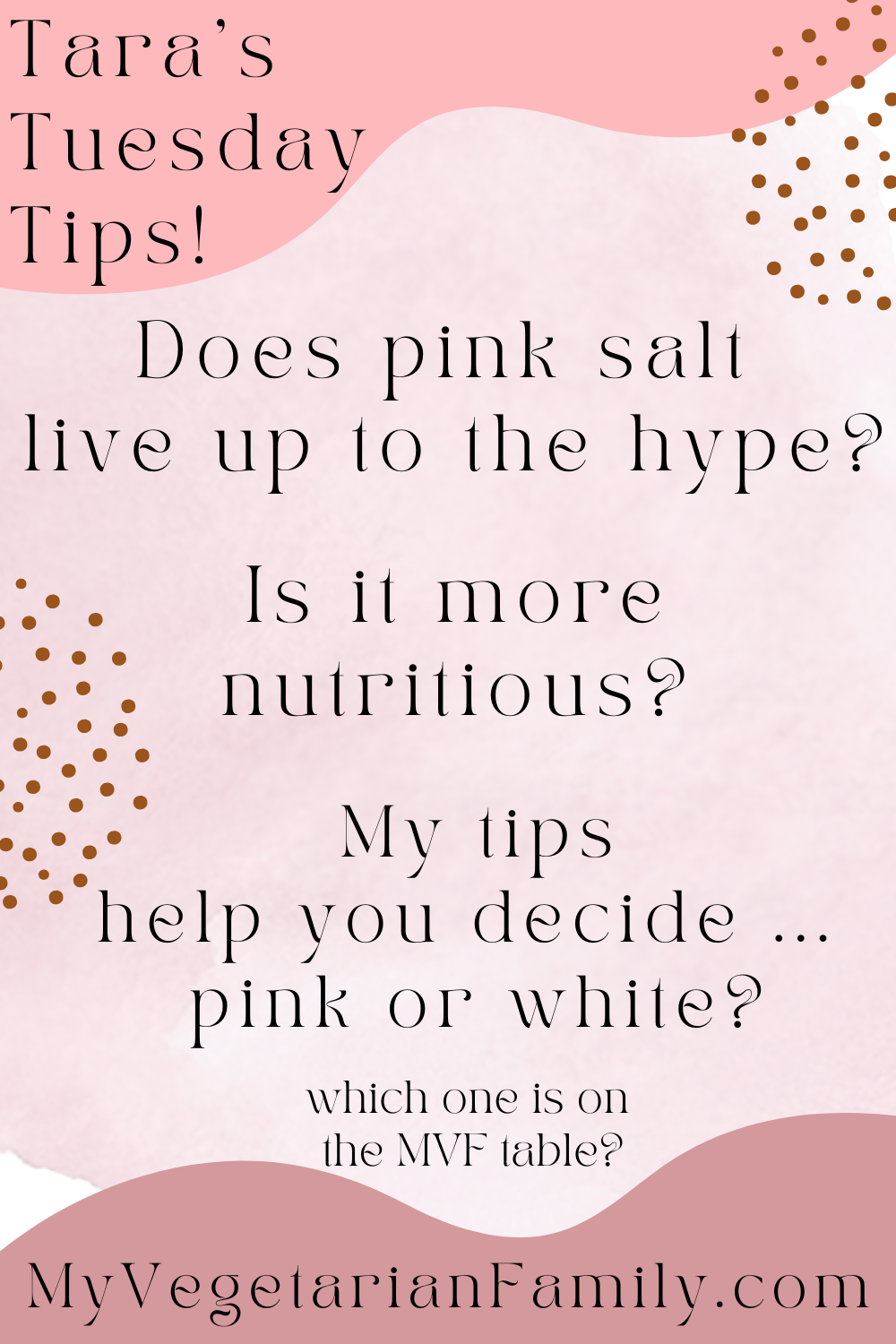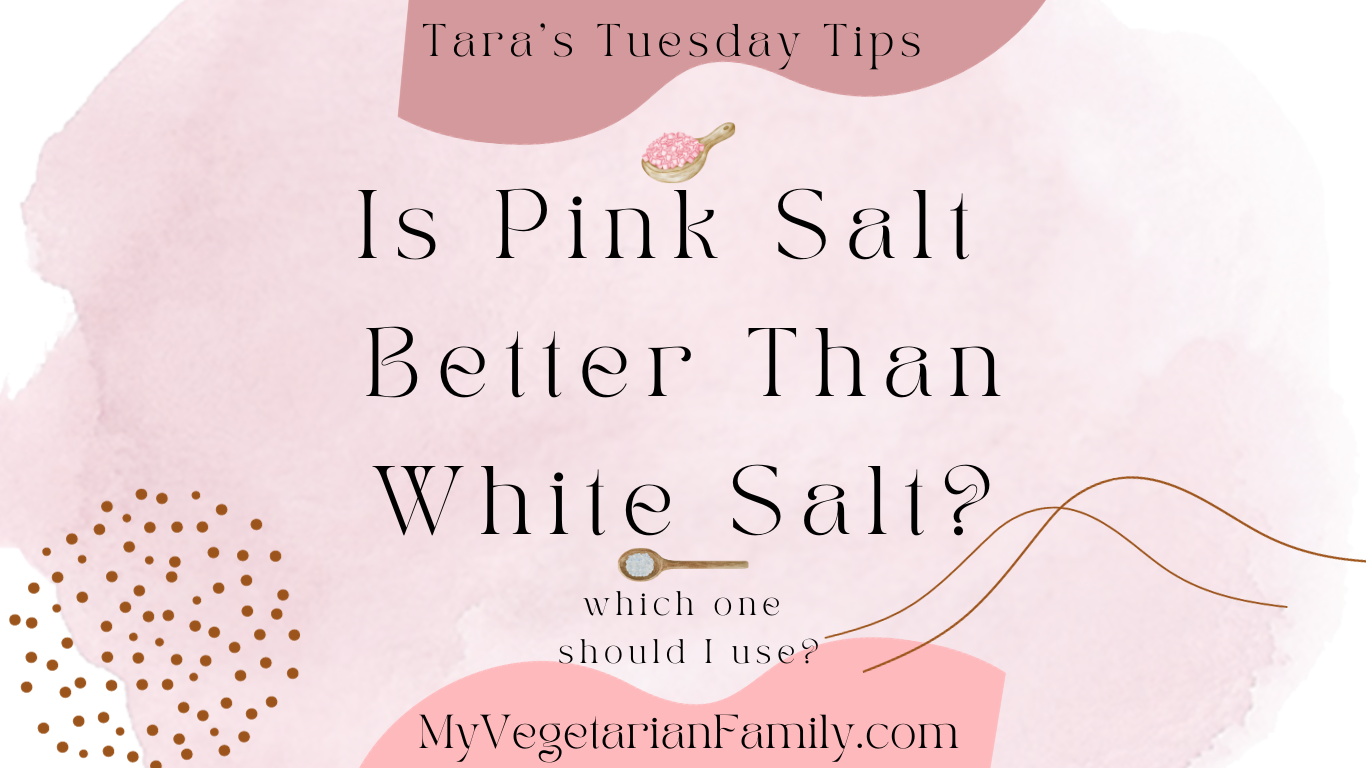It is no secret that pink salts have become a trendy food item over the last few years. There is no arguing that they are much prettier + more interesting looking than the average table salt. The lovely pink hue + textured rock-like appearance gives us the impression that the pink stuff is more natural + nutritious. So, what do you think? Is pink salt better than white salt?
Tara’s Tuesday Tips:
Is Pink Salt Better Than White Salt?
I absolutely love flavoring my food with all things salty. Herbs + spices are definitely part of my cooking, but adding a hint of salt is a must in my kitchen. Most certainly I jumped right on the pink salt train a few years ago. In all honesty, I’m still riding it! There are some dishes that I have grown accustomed to making with the flavor profile of a pink sea salt. Many food budgets can’t include these pricey salts. So today, I am going to help you decide if the pink stuff is bringing enough of a nutrition benefit to justify the cost.
What is the difference between pink and white salt?
Pink salt and white salt are both sodium chloride, making them chemically similar. The pink salts contain trace minerals (calcium, iron, magnesium, and manganese) giving it its pink hue. If you have ever noticed a taste difference between white and pink salt, these minerals are to thank for that. Harvested by hand from a salt mine, pink salts are thought to be in a more natural state. Table salt is mined from salt deposits which are then washed with water, eventually forming into crystals, and then iodized.
Why is pink salt pink?
It is naturally pink straight from when it is mined. The pink hue is thanks to the minerals and impurities found naturally in the crystals.
Is pink salt more nutritious?
It is safe to say that Himalayan Pink Sea Salt does contain higher amounts of minerals. However, research does not support the claims that these salts contain enough of these minerals to make a real difference in our health. We would need to eat largely unsafe quantities of pink salts to reap the benefits of these minerals.
Do pink salts contain higher levels of minerals we need?
Yes, this is true. Salts that are naturally mined and pink in color do contain higher levels of calcium, manganese, magnesium, and iron. However, there are only very small amounts in each crystal that we could never safely consume enough pink salt to meet our daily requirements. We would reach toxic levels of sodium and other minerals before reaping the benefits of these few.
Is there current research on pink salt?
Research is limited, but yes, a group of researchers in Australia compared the mineral content of pink salts to iodized table salt. They found that pink salts DO contain higher levels of calcium, iron, magnesium, and manganese but in such minute amounts that it is clinically insignificant. (PMID: 33086585)
What about iodine?
With so many wonderful minerals naturally found in the pink salts, it is difficult to imagine there is something missing, but it’s true! The less expensive little white crystals found just about everywhere you find a salt shaker, are far superior to the pink salts when it comes to iodine! Iodine is a mineral we all need. Iodine deficiency is actually still a common deficiency in society today and can lead to thyroid disorders if left untreated. Consuming table salt is an excellent way to ensure you are not deficient in iodine.
Why is pink salt more expensive than white table salt?
Essentially the cost is based on how these salts actually make it to your grocery store shelves. It is much cheaper to make white table salt than it is to mine Pink Himalayan Sea Salt. The extraction and production is what drives the price up, not the nutritional value.
Food For Thought
For me and my family, the pink salts are staying on my grocery list. In part because I love the look, but also because the aroma and taste are something I have grown to enjoy having in my recipes. I am absolutely not about to start swapping out my white salt for pink salt in hopes of gaining a nutrient boost. The science simply does not support that claim.
With slightly less sodium content and slightly higher mineral content, my apologies to my pink salt loving friends, but the pink stuff isn’t worth the hype. So, instead of focusing on the type of salt we eat, perhaps we focus on reducing our sodium intake in the forms of packaged and processed foods. If you are just using a sprinkle here and there, don’t sweat it!
I think I say this every Tuesday but here goes anyway: there are no bad foods. How much you are eating, how often, and with what are more important to things pay attention to. All foods fit whether they are pink or white or any color in between. If you can afford it, if you like it, if you have access to it, keep it in your pantry and rotate it in every now and then. That is how we do it! For this Tuesday, and every Tuesday, I hope my little tips of wisdom help you choose foods with more confidence. Stay salty, friends.
All the best,
Tara 🧂🩷🤍
A few other tips you might like:
Five Minute Tips For A Healthy Heart
Food Pairing For Glucose Control
How To Eat To Prevent Diabetes
The Vegetarian’s Guide to Prebiotics


⭐Did you learn if pink salt is better than white salt? Leave a comment below!
📸I love to see your creations! Follow me on Instagram @myvegetarianfamily and hashtag it #myvegetarianfamily
📩Be sure to subscribe here to my weekly emails for tips + recipes so that you never miss a veggie thing!

